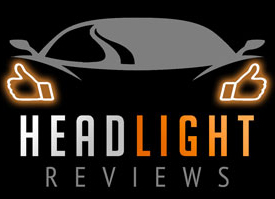This is my buying guide on the brightest 7440 LED bulbs in 2026. Below is a quick summary of my top recommendations. Scroll further down to read my in depth, hands on reviews, for each 7440 bulb.

Alla Lighting 7440
LED Bulbs
- 1,600 lumens per set
- Brightest budget
- Excellent visibility
- Strobe lights
- Quick installation
- 1-year warranty
- 84% heat retention
- 6,000K xenon white or 855 red
- 9.6 watts per pair
- 39 2835 LED chips
- Aluminum heatsink
- 30,000-hour lifespan
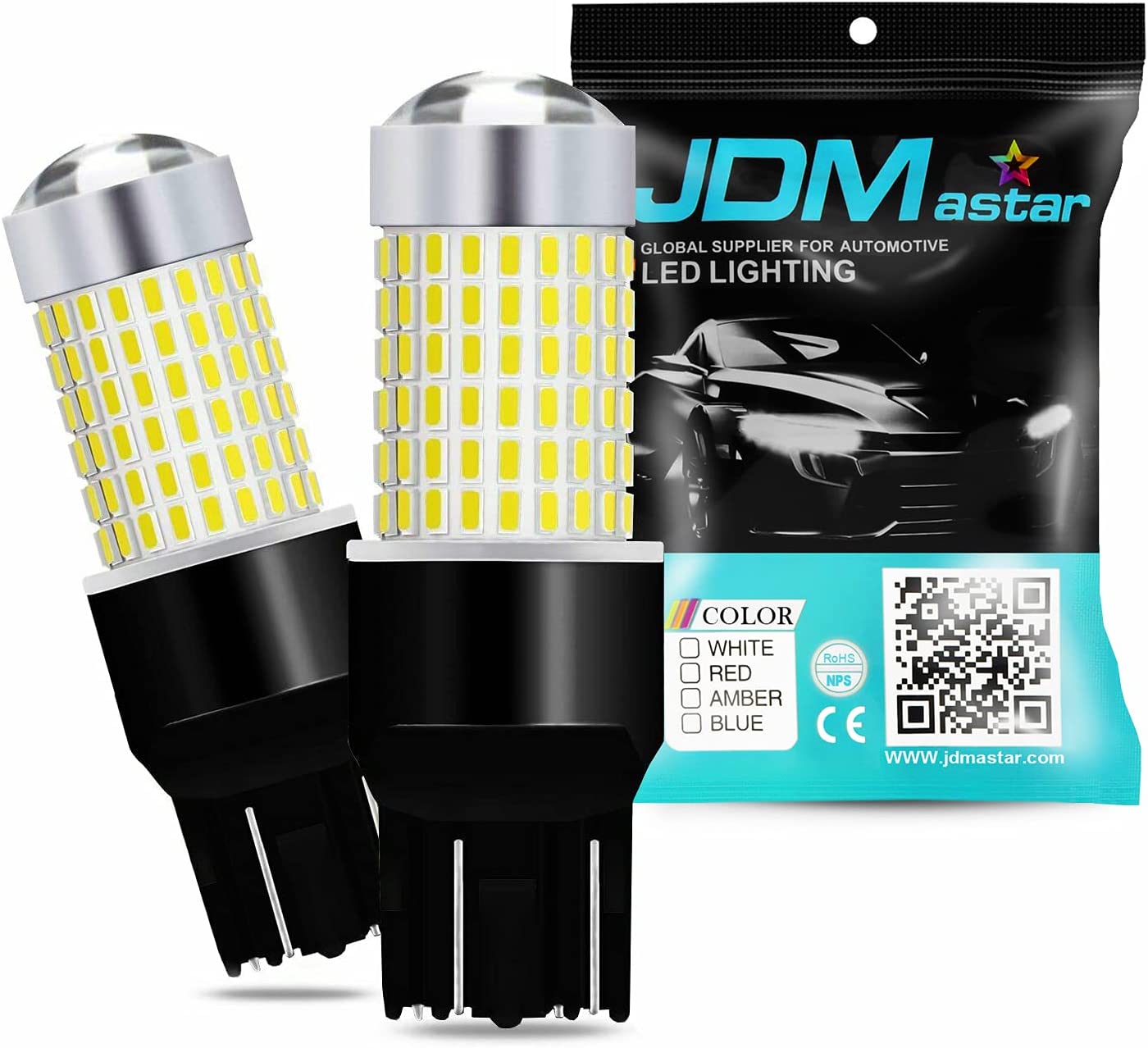
JDM Astar Extremely Bright
7440 LED Bulbs
- 2,400 lumens per pair
- Brightest overall
- 88% heat retention
- Great visibility
- Simple installation
- 50 watts per set
- 6000K bright white
- 144-EX chipsets
- 20,000-hour lifespan
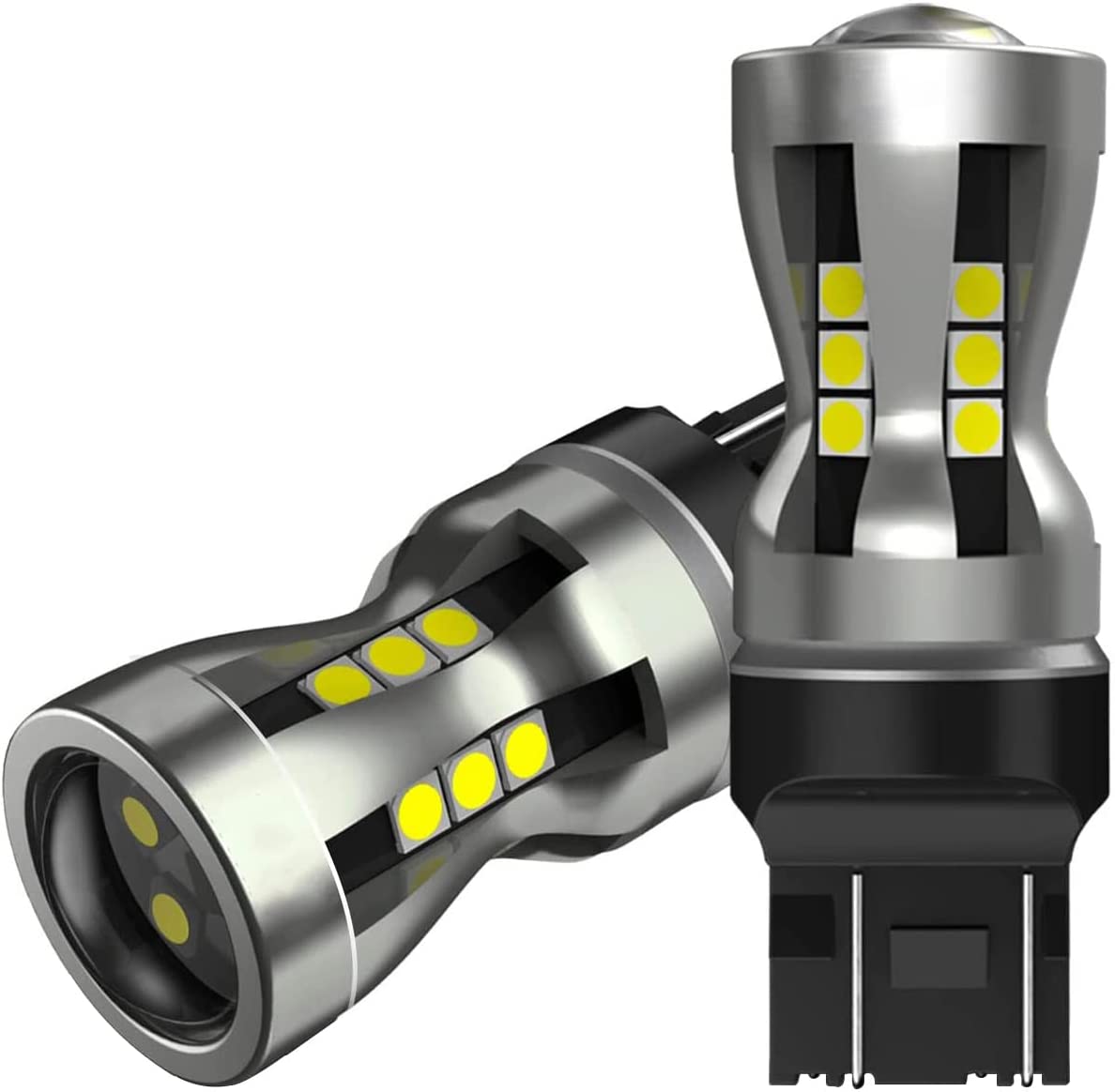
Sealight 7440
LED Bulbs
- 2,600 lumens per set
- Runner up for brightest 7440
- Excellent visibility with minimal spotting
- Quick installation
- Low power consumption, 8 watts each
- 6,500K xenon white
- Latest LED tech
- Aluminum heatsink
- Excellent heat retention of 88%
- 50,000-hour lifespan
Reversing, rear signal lights, or brake lights — are the most common uses for 7440 bulbs.
There are a lot of 7440 bulbs in the marketplace, so it’s not easy to know which ones are best or brightest.
That’s why you’re here. I’ve got the experience to help you make excellent choices. Cars are my passion, and that’s why I know just what to look for in every component.
I tested 12 different 7440 LED bulbs and narrowed it down to the three brightest.
The JDM Astar 7440 LED bulbs are the best of the bunch. Why?
These make really bright backup/reverse lights, are easy to install, and are made with high-quality materials.
Then I’ll follow up with a budget option and a runner-up for brightest.
Let’s further explore the world of 7440 LED bulbs.
JDM Astar Extremely Bright 7440 LED Bulbs
OVERALL BEST

Why I Believe JDM Astar 7440 LED Bulbs Are the Brightest
Why do I vouch for the JDM Astar 7440 LED bulbs as the brightest? It’s simple – they deliver a fantastic output of 1,200 lumens per bulb.
My Testing Adventure
When I conduct my tests, I follow a consistent method. I place a lux meter 20 feet from the bulb.
I decided to match up the JDM Astar with conventional halogen bulbs, which usually have around 465 lumens and scored 725 lux in the projector test and 910 lux in the reflector test in my previous tests.
Imagine my surprise when the initial lux rating of the JDM Astar 7440 LEDs was 954 lux. That’s a whopping 229 lux higher than the stock bulbs. This level of brightness is just what I want in my reverse lights.
After about 27 minutes – which is roughly the average commute time in the US – the bulbs’ brightness dipped to 88% or 842 lux. This impressive performance shows that these bulbs can handle heat exceptionally well.
The projector test blew me away with the JDM Astar 7440’s initial rating of 1,864 lux, which is more than double the brightness of stock halogens. They maintained their 88% heat retention, dropping only to 1,645 lux after 27 minutes.
I was pleased to see a reasonably low cut-off point, which allowed for full illumination of the targeted area, giving me much clearer visibility when reversing.
There were a few dark spots above and below the bulb, but they were minimal and in the places I expected. So, they didn’t affect visibility.
These bulbs are advertised at 25 watts each, and my reading was 24.8 watts, which is impressively accurate.
When I compared these to halogen bulbs, the JDM Astar 7440 LED lights definitely shone brighter, offering a much wider and clearer field of view.
The Beauty of Color Temperature
Color temperature is one reason I favor LEDs over halogens. Stock bulbs usually have an average Klvi color of 3,000 yellow, while most LEDs are in the 6,000 range.
These JDM Astar 7440 LEDs have a 6,000K rating, which is a beautiful xenon white. I particularly appreciated how it made the vehicle behind me stand out. The difference from the halogens was night and day, and I could even make out the license plate number clearly.
Managing the Heat
The JDM Astar 7440s lack a cooling fan. After 27 minutes, the temperature I measured was 185°F, which is a tad hot. They could do with a more efficient cooling system.
Added Advantages
The JDM Astar 7440s come equipped with 144-EX chipsets for extra brightness, and the glass lens intensifies the projection.
Installation Time
Installation was a breeze, thanks to their 1:1 ratio to the stock bulbs; they’re true plug-and-play. It took me less than ten minutes.
Durability and Longevity Test
While I couldn’t find an IP rating for the JDM Astar 7440 LED bulbs, I tested them in a storm, and they emerged unscathed.
What really impressed me was JDM Astar’s claim of 20,000 hours of longevity. With other manufacturers claiming their bulbs last 100,000 hours, this seemed a lot more realistic to me.
What the Other Drivers Are Saying
The JDM Astar 7440 LED bulbs have garnered over 1,900 customer reviews, averaging 4.6/5 stars.
Drivers are singing praises for the sheer brightness of the reverse lights and the clear visibility they provide.
Just like my observation, the most common complaint seems to be that they run a little hot.
My Final Take
For me, the JDM Astar is the winner for the brightest 7004 LED bulbs. They are 200% brighter than stock halogens, exhibit excellent heat retention, are reliable, and most importantly, they’re sure to provide you a much clearer view when reversing.
Pros
- 2,400 lumens per pair
- Brightest overall
- 88% heat retention
- Great visibility
- Simple installation
- 50 watts per set
- 6000K bright white
- 144-EX chipsets
- 20,000-hour lifespan
Alla Lighting 7440 LED Bulbs
BEST BUDGET
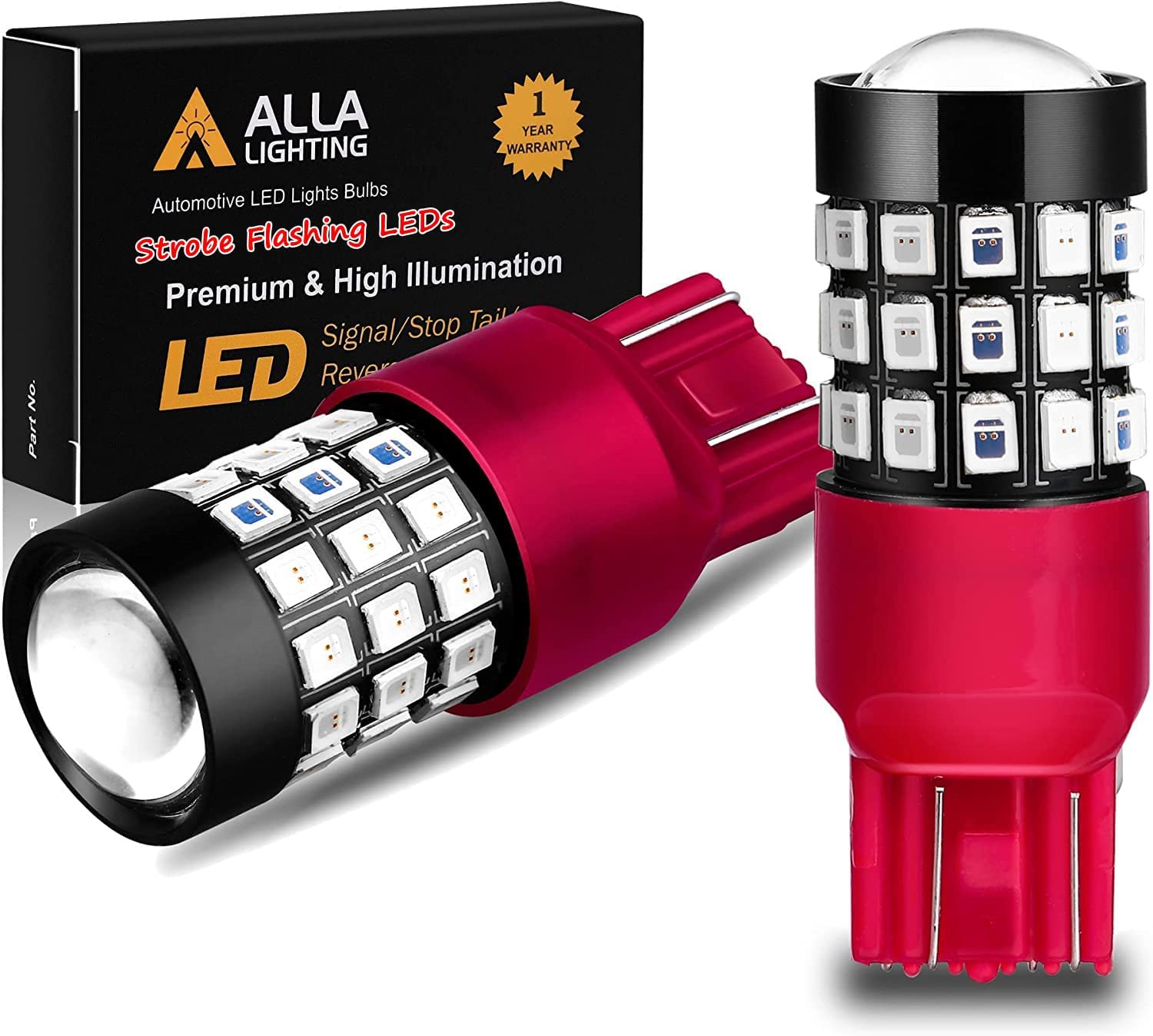
If you’re on a budget, you can’t go wrong with the Alla Lighting 7440 LED bulbs. These strobe Why Alla Lighting 7440 LED Bulbs Are a Budget-Friendly Choice
When you’re counting your pennies, the Alla Lighting 7440 LED bulbs can be your go-to choice. These strobe brake lights pack 1,600 lumens, delivering decent brightness without breaking the bank.
My Experiment with Alla
My projector test for the Alla Lighting 7440 LED bulbs resulted in an initial reading of 750 lux. That’s just a tad higher than the halogens at 735, but it’s perfect for tail lights in my book.
Fast forward to 27 minutes, these bulbs showed great heat retention by dropping only to 84%, or 630 lux.
The reflector test handed me an initial lux rating of 1,349 lux. That’s a whopping 150% brighter than your average stock halogens! After 27 minutes, they still held strong at 84%, or 1,133 lux.
The beam pattern of the Alla Lighting 7440 LEDs captured my liking. They retained their brightness well, and though the cut-off point could have been slightly lower, I found the visibility to be impressive with hardly any dark spots.
These bulbs are advertised as having 4.8 watts per bulb. Interestingly, my test affirmed that specification.
All About the Color Temperature
The Alla Lighting 7440 LED headlight bulbs give you a choice between two Kelvin color options.
You can go for the 6,000 Xenon White for a sharp color that enhances the visibility of objects behind you. Or, you can opt for the standard brake light red, set at 855K.
Which one’s better? Well, stick around till the end where I dive into the red versus white debate.
Dealing with the Heat
These bulbs come with an aluminum heatsink for cooling, but much like the JDM Astar 7440 LEDs, they lack a fan. Consequently, they can get pretty hot – I recorded 190°F after 27 minutes.
Cool Features
What made me like the Alla Lighting 7440 LEDs even more is their strobe feature. They flash thrice before stabilizing, which not only keeps them within legal limits but can also help prevent rear-end collisions.
Installation Experience
I didn’t have any trouble installing these bulbs – they’re slightly larger than stock bulbs, so they may not fit all vehicles. Other drivers reported compatibility issues with certain models, particularly Honda.
In my case, they were up and running in about ten minutes, thanks to their plug-and-play design.
Durability and Longevity Check
The Alla Lighting 7440 bulbs are equipped with 39 high-performance 2835 LED chips, which explain their brightness level.
With a 360-degree illumination design, it’s no wonder why the beam pattern is so wide and clear.
The folks at Alla Lighting claim these bulbs will last approximately 30,000 hours. Once again, I appreciate this realistic estimate.
Although I couldn’t find an IP rating in their marketing materials, Alla Lighting’s other bulbs are IP68-rated. So, I wouldn’t be surprised if these bulbs fall into the same category. I even tested them in heavy rain for half an hour, and they held up well.
Word on the Street
The Alla Lighting 7440 LED bulbs have received over 8,000 customer reviews with a decent average rating of 4.4/5 stars.
Buyers have lauded the bulbs’ excellent brightness and improved visibility. As expected, their tendency to run hot and installation issues with some Honda models have been mentioned.
Final Thoughts
Retailing at less than $20 a set, the Alla Lighting 7440 LED bulbs are among the most affordable options out there. They serve as excellent replacement bulbs for reverse or brake lights.
Pros
- 1,600 lumens per set
- Brightest budget
- Excellent visibility
- Strobe lights
- Quick installation
- 1-year warranty
- 84% heat retention
- 6,000K xenon white or 855 red
- 9.6 watts per pair
- 39 2835 LED chips
- Aluminum heatsink
- 30,000-hour lifespan
Cons
- They can run hot
- They are difficult to install in some Hondas
Sealight 7440 LED Bulbs
PREMIUM CHOICE
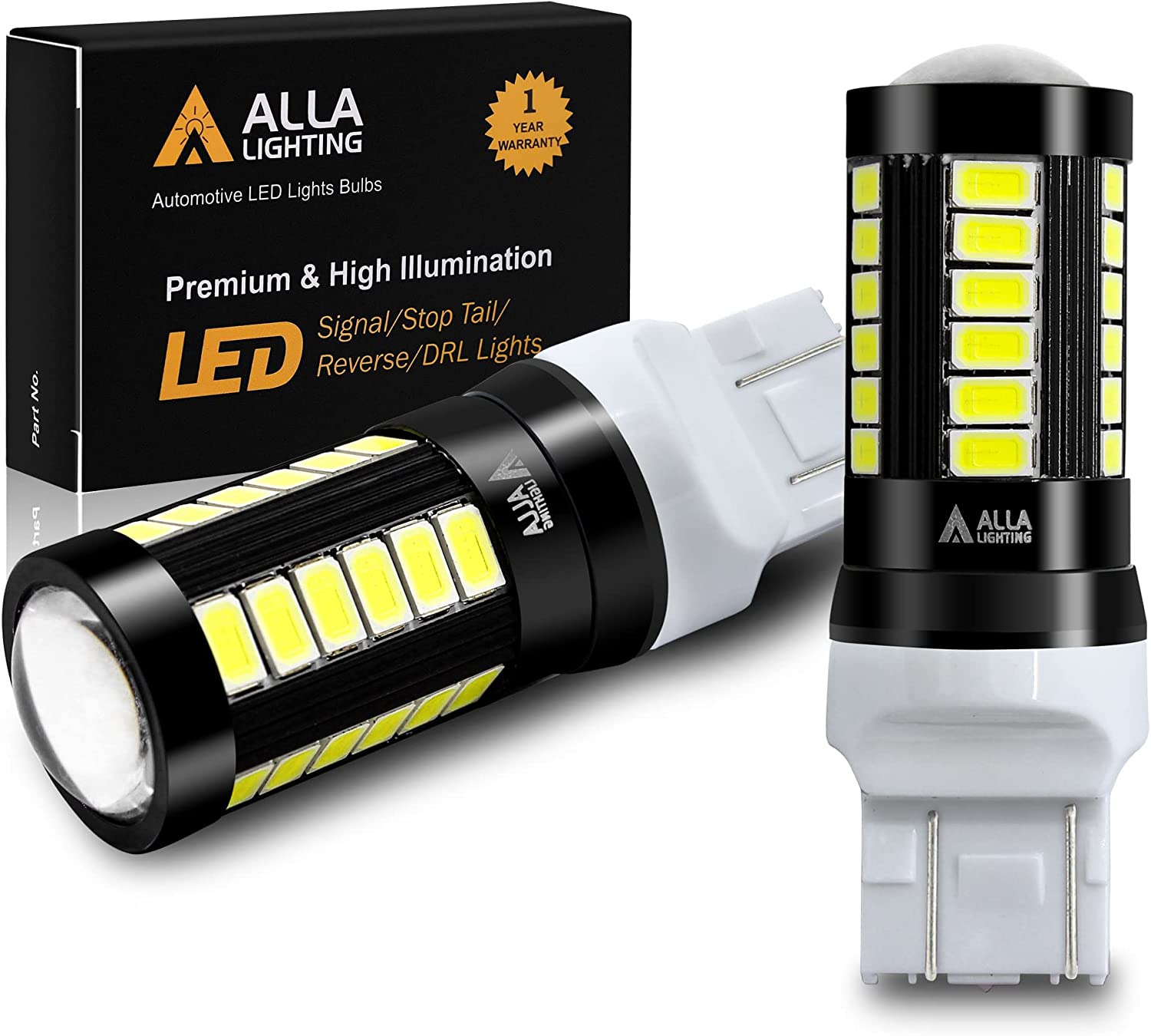
Why the Sealight 7440 LED Bulbs are My Second Pick for Brightness
The Sealight 7440 LED bulbs come in as my close second, putting out an impressive 1,300 lumens each.
My Adventure with Sealight
During my projector test, the Sealight 7440 LED bulbs kicked off with 834 lux and exhibited excellent heat retention at 88%, leaving us with 735 lux.
In the reflector test, the initial reading was a hefty 1,472 lux, which gracefully dipped to 88%, or 1,295 lux.
One thing I truly appreciated was the low cut-off point, which translated into minimal spotting and superb overall visibility.
The advertised wattage is 8, and my observations were almost spot-on, with a reading of 7.6 watts.
A Look at the Color Temperature
The Sealight 7440 LED bulbs emit a crisp 6,500K white light, which I found really enhanced clarity from the tail lights.
Dealing with the Heat
I was really impressed with the efficiency of the cooling system. The aluminum heatsink did an amazing job in preventing the lights from overheating. After running for 27 minutes, the temperature was a mere 139°F.
Installing Sealight
Installing the Sealight 7440 LED bulbs was a breeze for me. Almost identical in size to the stock halogens, they popped right in with no hassle. Each bulb took me less than 5 minutes to install.
On Durability and Longevity
The Sealight 7440 bulbs come equipped with the latest LED technology, promising zero flickering, UV light emission, or IR radiation.
They’re claimed to last a standard 50,000 hours. Judging from the impressive heat retention, I have a good feeling they’ll go the distance.
Yet again, I came up short trying to find an advertised IP rating.
What the Drivers Say
The Alla Lighting 7440 LED bulbs have amassed over 4,000 customer reviews, boasting an average rating of 4.4/5 stars.
Most drivers, like me, found the bulbs easy to install and were all praises for the excellent visibility provided while reversing.
However, some drivers reported experiencing flickering issues, which were resolved with a decoder.
Wrapping It Up
Claiming the second spot, the Sealight 7440 LED bulbs stand almost as bright as the JDM Astars, and they excel in heat management.
Pros
- 2,600 lumens per set
- Runner up for brightest 7440
- Excellent visibility with minimal spotting
- Quick installation
- Low power consumption, 8 watts each
- 6,500K xenon white
- Latest LED tech
- Aluminum heatsink
- Excellent heat retention of 88%
- 50,000-hour lifespan
Cons
- A decoder may be needed to reduce flickering
What to Consider When Choosing the Brightest 7440 LED Bulb
Many drivers believe the 7440 and 7443 bulbs are completely interchangeable, and they’re almost right. They are similar in many ways.
However, the main differences are that 7440 bulbs are best used for reverse/backup lights or rear turn signal lights, while the 7443 are better suited for front turn signal lights and tail lights, as they tend to be brighter.
Some drivers even use the 7443 as daytime running lights (DLR).
The other difference is with the filament. The 7440 bulb has only one, while the 7443 is a dual filament design.
I’m a firm believer in using the proper bulb in its appropriate socket. That way, you minimize dashboard errors, CAN bus issues, and incorrect illumination.
Red or White: The Grand Debate
The main thing to consider when buying brake lights or tail lights is the bulb’s color. Rear lights come in red or white, and while red can seem like the most logical option, it doesn’t provide the clarity that a white bulb does.
If you have clear lenses on the brake lights, you’ll have to buy colored lights to get the red glare still. However, most vehicles come with a red lens so you can choose white bulbs for clearer visuals.
The red light tends to produce a more intense shade when braking or reversing compared to a white bulb, but the main difference can be found in the lumens.
White lights usually have a much higher lumen rating than their red counterparts. This means the white lights will be brighter and provide better visibility than the red ones. So, while red is more intense, the white lights offer increased clarity of objects behind the car.
